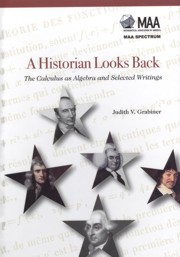Book contents
- Frontmatter
- Contents
- Introduction
- Part I The Calculus as Algebra
- Part II Selected Writings
- 1 The Mathematician, the Historian, and the History of Mathematics
- 2 Who Gave You the Epsilon? Cauchy and the Origins of Rigorous Calculus
- 3 The Changing Concept of Change: The Derivative from Fermat to Weierstrass
- 4 The Centrality of Mathematics in the History of Western Thought
- 5 Descartes and Problem-Solving
- 6 The Calculus as Algebra, the Calculus as Geometry: Lagrange, Maclaurin, and Their Legacy
- 7 Was Newton's Calculus a Dead End? The Continental Influence of Maclaurin's Treatise of Fluxions
- 8 Newton, Maclaurin, and the Authority of Mathematics
- 9 Why Should Historical Truth Matter to Mathematicians? Dispelling Myths while Promoting Maths
- 10 Why Did Lagrange “Prove” the Parallel Postulate?
- Index
- About the Author
10 - Why Did Lagrange “Prove” the Parallel Postulate?
from Part II - Selected Writings
- Frontmatter
- Contents
- Introduction
- Part I The Calculus as Algebra
- Part II Selected Writings
- 1 The Mathematician, the Historian, and the History of Mathematics
- 2 Who Gave You the Epsilon? Cauchy and the Origins of Rigorous Calculus
- 3 The Changing Concept of Change: The Derivative from Fermat to Weierstrass
- 4 The Centrality of Mathematics in the History of Western Thought
- 5 Descartes and Problem-Solving
- 6 The Calculus as Algebra, the Calculus as Geometry: Lagrange, Maclaurin, and Their Legacy
- 7 Was Newton's Calculus a Dead End? The Continental Influence of Maclaurin's Treatise of Fluxions
- 8 Newton, Maclaurin, and the Authority of Mathematics
- 9 Why Should Historical Truth Matter to Mathematicians? Dispelling Myths while Promoting Maths
- 10 Why Did Lagrange “Prove” the Parallel Postulate?
- Index
- About the Author
Summary
Introduction
We begin with an often-told story from the Budget of Paradoxes by Augustus de Morgan: “Lagrange, in one of the later years of his life, imagined” that he had solved the problem of proving Euclid's parallel postulate. “He went so far as to write a paper, which he took with him to the [Institut de France], and began to read it.”
But, De Morgan continues, “something struck him which he had not observed: he muttered ‘Il faut que j'y songe encore’ [I've got to think about this some more] and put the paper in his pocket” [8, p. 288].
Is De Morgan's story true? Not quite in that form.But, as Bernard Cohen used to say, “Truth is more interesting than fiction.” First, according to the published minutes of the Institut for 3 February 1806, “M. Delagrange read an analysis of the theory of parallels” [25, p. 314; italics added]. Those present are listed in the minutes: Lacroix, Cuvier, Bossut, Delambre, Legendre, Jussieu, Lamarck, Charles, Monge, Laplace, Haüy, Berthollet, Fourcroy—a most distinguished audience!
Furthermore: Lagrange did not throw his manuscript away. It survives in the library of the Institut de France [32]. There is a title page that says, in what looks to me like Lagrange's handwriting, “On the theory of parallels: memoir read in 1806,” together with the signatures of yet more distinguished people: Prony and Poisson, along with Legendre and Lacroix. The first page of text says, again in Lagrange's handwriting, that it was “read at the Institut in the meeting of 3 February 1806.”
It is true that Lagrange never did publish it, so he must have realized there was something wrong.
- Type
- Chapter
- Information
- A Historian Looks BackThe Calculus as Algebra and Selected Writings, pp. 257 - 274Publisher: Mathematical Association of AmericaPrint publication year: 2010



